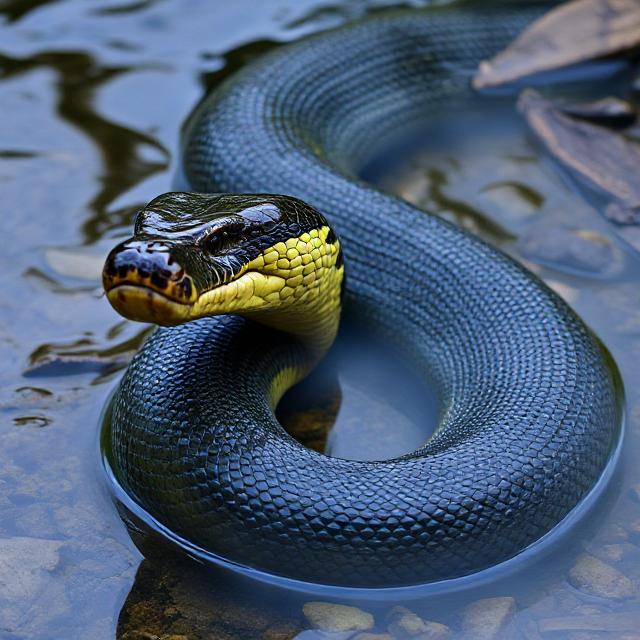🐍 Anaconda: General Overview
Anacondas are large, non-venomous snakes found in South America. Known for their incredible size and strength, they are powerful constrictors and spend much of their lives in or near water. The Green Anaconda (Eunectes murinus) is the largest and heaviest snake species in the world.

🔬 Classification
- Kingdom: Animalia
- Phylum: Chordata
- Class: Reptilia
- Order: Squamata
- Family: Boidae
- Genus: Eunectes
Species:
- Green Anaconda (Eunectes murinus) – Largest species
- Yellow Anaconda (Eunectes notaeus) – Smaller, found in Paraguay and northern Argentina
- Dark-Spotted Anaconda (Eunectes deschauenseei) – Rare, Amazon Basin
- Bolivian Anaconda (Eunectes beniensis) – Recently identified, Bolivia
🐊 Physical Characteristics
- Length: Green Anaconda: up to 29 feet (most are 15–20 feet)
- Weight: Up to 550 lbs (250 kg)
- Color: Olive green with dark oval blotches (Green Anaconda); yellow with black spots (Yellow Anaconda)
- Body: Thick, muscular body, small head relative to body size
- Eyes & Nostrils: Positioned on top of the head—ideal for semi-aquatic life
🌎 Habitat
- Range: Tropical South America – Amazon and Orinoco basins
- Preferred Habitat: Swamps, marshes, slow-moving rivers, flooded forests
- Lifestyle: Semi-aquatic; rarely stray far from water
🌿 Diet
- Type: Carnivore (constrictor)
- Typical Prey: Fish, birds, reptiles, capybaras, caimans, deer, and even jaguars
- Feeding Behavior: Ambush predator; kills by constriction (squeezing until prey suffocates)
- Feeding Frequency: May go weeks or months between meals after a large kill
🧠 Behavior
- Activity: Mostly nocturnal
- Solitary: Except during mating season
- Swimming Ability: Excellent swimmers, often submerged with only eyes and nostrils above water
- Aggression: Generally shy but can be aggressive if threatened
🍼 Reproduction
- Mating Season: April to May (wet season)
- Reproductive Strategy: Ovoviviparous (females give birth to live young)
- Gestation Period: 6–7 months
- Litter Size: 20–40 neonates, each about 2 feet long
- Mating Balls: Several males may compete to mate with one female in a breeding ball
🛡️ Conservation Status
- Green Anaconda: Not currently endangered, but listed as Least Concern
- Threats: Habitat destruction, hunting for skin/meat, fear-driven killing
- Protections: Some legal protection; habitat preservation is key
- Population Trend: Stable overall, but vulnerable in some regions
🎉 Fun Facts
- The Green Anaconda holds the record for the heaviest snake in the world.
- Anacondas can remain underwater for up to 10 minutes without surfacing.
- They have flexible jaws that allow them to swallow prey much larger than their head.
- In some cases, females may cannibalize males after or during mating.
- Despite their fearsome reputation, attacks on humans are extremely rare.
- The word “Anaconda” likely comes from the Tamil word anaikondra (“elephant killer”)—despite no anaconda actually killing elephants.